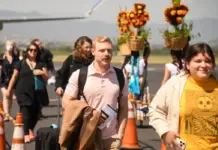Oaxaca will once again be one of the host cities for the Night of the Stars in 2025. This national astronomy outreach event will feature expert scientists, telescope observations, and various workshops designed to connect the public with the universe and spark an interest in science among younger generations.
The Night of the Stars is an event that has been celebrated annually since 2009 in different cities across Mexico, including Oaxaca and Mexico City. It is organized by various scientific and educational institutions, among them the National Autonomous University of Mexico (UNAM).
What activities are planned for the 2025 Night of the Stars?
During the event, workshops, lectures, astronomical projections, experiments, and interactive activities for the whole family will be offered. Telescopes will also be set up for free observation of celestial bodies, according to Irving García Jiménez, coordinator of the Night of the Stars in Oaxaca.
Workshops on quantum mechanics
Interactive workshops for children
Lectures with specialists
Astronomical observations
Astronomical projections
The activities are free and in Oaxaca will take place at four venues, including: the Rector’s Office Esplanade of the Autonomous University Benito Juárez (UABJO), located on Avenida Universidad s/n, Ex-Hacienda 5 Señores; and the Main Park of San Ildefonso Villa Alta, located on 16 de Septiembre, s/n, in the municipality of San Ildefonso Villa Alta.
In 2025, the astronomical event will take place on Saturday, November 29, and will be held simultaneously at 120 venues throughout the country. The Night of the Stars had its first edition during the International Year of Astronomy in 2009, where amateur and professional astronomers, along with students, professors, and science communicators, shared their knowledge, explained UNAM.
Since its inception, it has been organized by a National Committee, in collaboration with the country’s leading educational and research institutions and various civil society groups. Furthermore, after 12 years, it has brought together more than two million people throughout Mexico and in eight countries in Latin America and Asia.

Source: oaxaca.heraldodemexico




